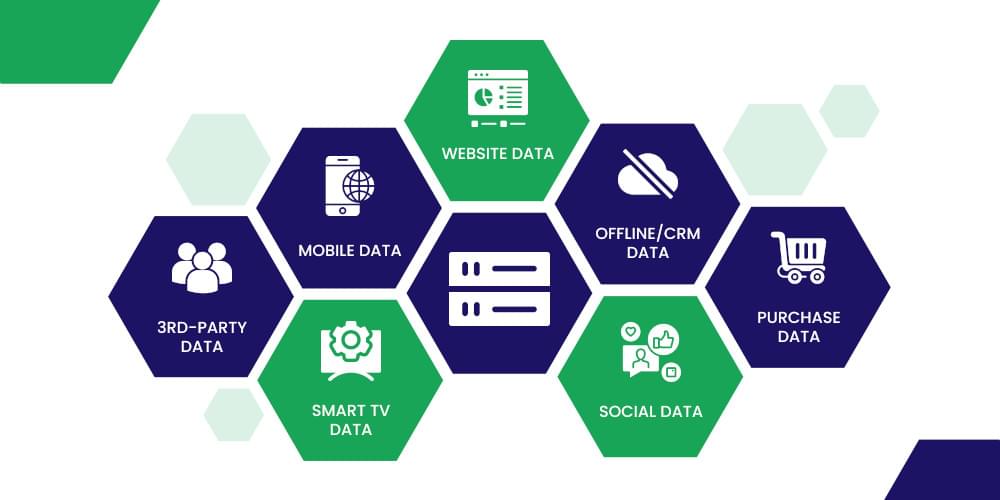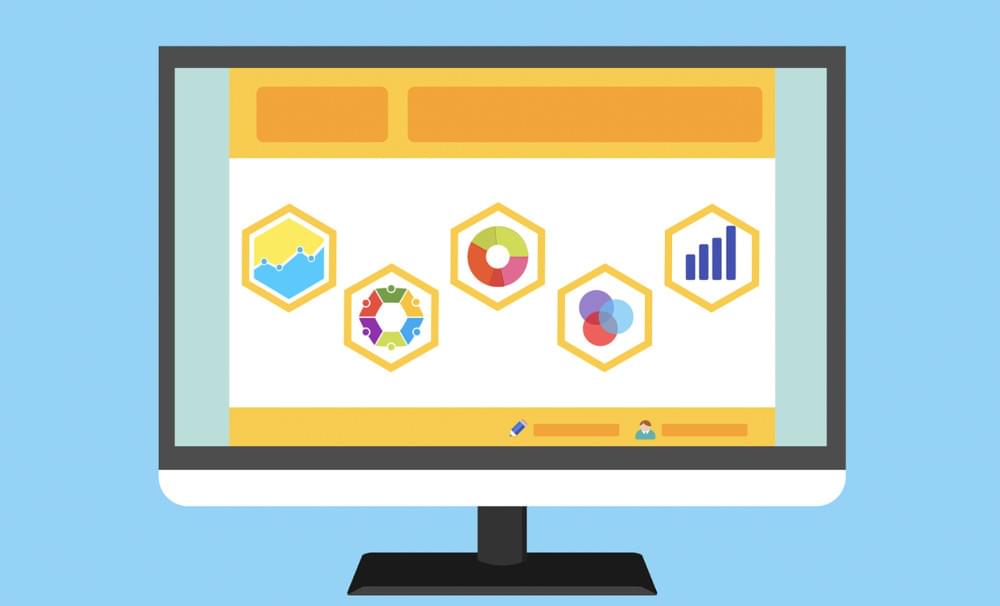Picture this: you’re walking into a library. There are rows upon rows of books, all organized by subject matter and genre. Each book contains a wealth of knowledge, but it’s up to you to find the ones that will help you the most.
Now imagine that instead of books, you have a plethora of data at your fingertips. Same applies to our current situation. Instead of a library though, we have big data!
In this tech-centric era, digital media is growing more and more complicated with each passing day and that means creation of more data on a daily basis. Collecting this data is one thing but converting it into useful insights that drive sales is the challenging part. In such a situation, a DMP or Data Management Platform comes in handy.
But what it is exactly, how it works, and how you can build a DMP? We’ll discuss it all in today’s article. So without further ado, let’s begin:
What is a Data Management Platform?

Think of a data manager platform or a data management platform as a giant warehouse that stores all your data in one centralized location. It’s like a library, but instead of books, it’s filled with data from all your marketing channels - social media, email, website, and more. But a DMP doesn’t just store your data - it also helps you make sense of it all.
With a DMP, you can segment your data into specific categories, like age, gender, interests, and location. This makes it easier to target specific groups of people with personalized marketing campaigns that are tailored to their needs and preferences.
But that’s not all - a DMP also gives you the tools you need to measure and analyze your data, so you can see which marketing tactics are working and which ones need improvement. This helps you make informed decisions about your marketing strategy and ensures that you’re always on course towards your goals.
How is Data Manager Platform Better than Other Data Management Tools?
Now that you know the answer to ‘what is a data management platform’ problem, let’s compare it to the other data management data tools.
Compared to other data management tools, a Data Management Platform (DMP) offers several unique advantages, especially when combined with Ipaas Solutions to simplify cross-platform data management and ensure unified insights. that make it a more powerful and effective solution for businesses that need to manage large volumes of customer data.
First and foremost, a DMP is specifically designed to handle the complexities of marketing data. It’s built to collect, organize, and activate data from multiple sources, such as your website, social media platforms, email marketing campaigns, and more. Other data management tools, on the other hand, may be more focused on specific types of data or industries.
In addition, a DMP is highly scalable and can handle large amounts of data from millions of users. This is essential for businesses that need to manage data at a global scale or those that expect to grow rapidly in the future. Other data management tools may struggle to handle this level of complexity and volume.
Another key advantage of a data manager platform is its ability to segment and organize data into highly specific categories. This allows businesses to target specific audiences with personalized marketing messages that are tailored to their unique interests, preferences, and behaviors. Other data management tools may offer limited segmentation capabilities or none at all.
Finally, a DMP for marketing typically includes advanced analytics and reporting features that allow businesses to measure the effectiveness of their marketing campaigns and make data-driven decisions about future strategies. This can be critical for businesses that need to optimize their marketing efforts for maximum ROI.
Other data management tools may lack these advanced reporting features or may require additional tools to analyze data effectively.
How Does a Data Management Platform Work?

A Data Management Platform (DMP) serves as a centralized system that collects, segments, organizes, and activates customer data, providing businesses with a comprehensive view of their customers. Let’s discuss its main functionalities one by one:
1. Data Collection
Data collection is the first step in the data management process. A data manager platform enables businesses to collect data from multiple sources, such as their website, social media platforms, email marketing campaigns, and more. This data can include information about customer behavior, such as website visits, clicks, purchases, and more. By collecting this data in a centralized location, businesses can gain a comprehensive view of their customers and use that information to improve their marketing strategies.
2. Data Segmentation and Organization
Once the data is collected, a DMP enables businesses to segment and organize it into specific categories. This is known as data segmentation, and it allows businesses to group customers based on various attributes, such as age, gender, interests, location, and more. This makes it easier to create targeted marketing campaigns that are tailored to specific groups of customers, improving the effectiveness of those campaigns and increasing the chances of converting leads into customers.
3. Data Activation
Data activation refers to the process of using customer data to activate marketing campaigns. A DMP enables businesses to use customer data to create personalized marketing messages that are tailored to each customer’s unique interests and preferences. Understanding metrics like turnover can also influence these efforts, can provide valuable insights for workforce management. By activating these campaigns through multiple channels, businesses can increase their reach and engage with customers across a variety of touch-points.
4. Analytics and Reporting
Finally, a DMP provides businesses with powerful analytics and reporting features that enable them to measure the effectiveness of their marketing campaigns. This includes metrics such as click-through rates, conversion rates, and more. By analyzing this data, businesses can identify areas of improvement and make data-driven decisions about future marketing strategies.
Benefits of Using a Data Management Platform
Understanding the benefits of a DMP (Data Management Platform) is crucial for businesses looking to improve their marketing strategies and stay ahead of the competition. So let’s look into what advantages it has got to offer:
- Improved targeting and personalization: A cloud data management platform allows businesses to collect and organize customer data in a centralized location, enabling them to create highly targeted and personalized marketing campaigns that increase customer engagement and lead to higher conversion rates.
- Increased efficiency and productivity: By automating many of the tasks involved in data management, such as data collection, segmentation, and activation, DMPs free up time for marketing teams to focus on other critical tasks, improving overall efficiency and productivity.
- Improved customer experiences: DMPs allow businesses to use customer data to create personalized marketing messages and experiences, which can lead to increased customer loyalty and advocacy, ultimately improving the overall customer experience.
- Cost savings: DMPs can result in significant cost savings for businesses by reducing the cost of data management, improving the accuracy of customer data, and reducing wasted ad spend through improved targeting and personalization.
How to Build a Data Management Platform?
Building a Data Management Platform (DMP) requires a significant amount of expertise in data management, software engineering, and data science. It’s not a simple process, and it can take a considerable amount of time and resources.

Here’s a general overview of the steps involved in building a DMP:
- Define the business requirements: The first step in building a DMP is to define the business requirements. This includes identifying the data sources to be collected, the types of data to be analyzed, the segmentation and organization of the data, and the activation of the data in marketing campaigns.
- Develop a data schema: The data schema defines the structure of the data and how it will be organized in the DMP. It’s essential to ensure that the schema is flexible and can accommodate changes as the business grows and data needs change.
- Build the data collection system: Once the data schema is defined, the data collection system can be built. This involves setting up integrations with various data sources, such as website analytics tools, social media platforms, and advertising platforms.
- Develop the data processing and analytics pipeline: The data processing and analytics pipeline is responsible for segmenting and organizing the data, running algorithms and machine learning models, and activating the data in marketing campaigns.
- Build the user interface: The user interface is the front-end system that allows users to access and interact with the DMP. It should be intuitive and easy to use, providing users with the ability to view reports and analytics, create segments, and activate data in marketing campaigns.
- Test and deploy the DMP: Once the DMP is built, it needs to be tested to ensure that it’s working correctly and meeting the business requirements. After testing, the DMP can be deployed to production.
Building a cloud data management platform is a complex process that requires expertise in data management, software engineering, and data science. By following the steps outlined above, businesses can build a DMP that meets their specific needs and helps them achieve their marketing goals.
Now let’s say instead of building your own DMP, you wish to purchase or subscribe from a third-party. There are some key factors to consider in such a case.
Considerations when Choosing a Data Management Platform
Before you invest in a DMP, there are some key factors to consider as these factors will impact your purchase in the longer run. Let’s discuss each one:
- Budget: DMPs can vary significantly in price, and businesses should consider their budget when choosing a DMP. Some DMPs may be more expensive but offer advanced features, while others may be more budget-friendly but have limited capabilities.
- Scalability: As a business grows, its data management needs may also change. It’s essential to choose a DMP that can scale with the business and handle larger volumes of data and more complex data sets. Crawlbase’s Crawler helps business to get and manage large amount of data without any hassle.
- Integration with other marketing technologies: A DMP should seamlessly integrate with other marketing technologies, such as demand-side platforms (DSPs) or customer relationship management (CRM) systems, to maximize its effectiveness and streamline the marketing process.
- Compliance with data privacy regulations: Businesses should ensure that the DMP they choose is compliant with data privacy regulations, such as the General Data Protection Regulation (GDPR) or the California Consumer Privacy Act (CCPA). Failure to comply with these regulations can result in severe legal and financial consequences.
By taking these considerations into account, businesses can choose a DMP that meets their specific needs and helps them achieve their marketing goals.
Related: 19 Best Web Crawling Tools for Efficient Data Extraction
Final Words
A Data Management Platform (DMP) is a powerful tool that enables businesses to collect, organize, and activate customer data, resulting in more effective marketing campaigns, increased efficiency, and improved customer experiences.
Choosing the right DMP requires careful consideration of factors such as budget, scalability, integration with other marketing technologies, and compliance with data privacy regulations.
While building a DMP requires significant expertise and resources, the benefits it provides to businesses make it a worthwhile investment. By leveraging the power of a DMP, businesses can gain a competitive edge in today’s data-driven marketplace.











